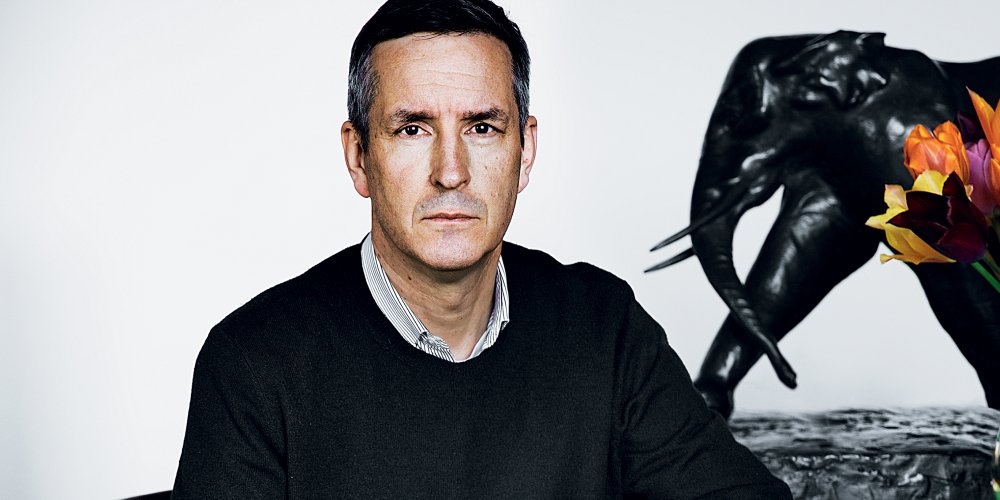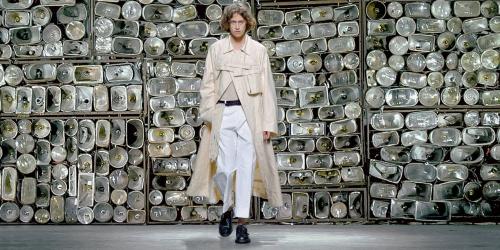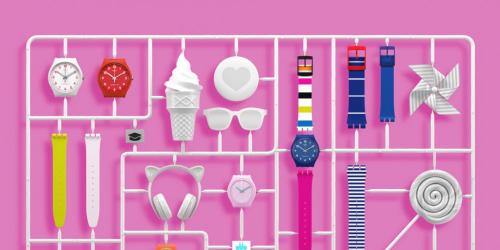He who likes to question appearances is the opposite of his. The photos often freeze him in a stiff austerity, but at the end of an interview of an unexpected sweetness in his offices of Antwerp, it will be necessary to conclude that it is the integrity which dictates to his omnipresent smile not to simulate for goals. We expect, wrongly, the intellectual rigor that it also takes hold of the body, but it is with the flexibility of a dancer, with long strides elastic and a wide arm, he will go to make you a coffee. In thirty years of career, Dries Van Noten always declined the offers of the large groups, preferring to remain independent. His sense of balance combines the simplicity of cuts with the richness of materials, prints and jacquards. Tamed kitsch, casual classicism. This placid man likes tension and gives antagonisms the power to arouse emotions: sports and sewing (Spring-Summer 2007), Ziggy Stardust and Diaghilev (Fall-Winter 2011-2012). Her clients are of rare fidelity and find in her clothes the color of their charisma.
Marie Claire: The silk scarf is a central part of your spring-summer 2018. What does it represent for you?
Dries Van Noten: Everyone has a memory with a silk scarf. My mother was wearing it. My parents had a clothes shop, in the 70s they sold them. People knotted them under their cloaks, only the name of the fashion designer exceeded: Pierre Cardin , Nina Ricci, Ted Lapidus. I like what the headscarf evokes from the bourgeoisie. Her beauties and her ugliness. When you think of the scarf, you think of Hermes , bourgeois but not too much. But "bourgeois" also means narrow-minded. I like these elements pointing in various directions. We wanted the scarves to look vintage, and use them as a finished object. We started from a collage of Picasso, Women at their toilet, a composition of random appearance. Instead of using beige paint, Picasso found pieces of beige wallpaper and reassigned them. The end result is dictated by coincidence. I wanted to mix two or three whole scarves on a garment, to play with. We wanted people to say, "Is it serious? Can we really do that? "
This collection, where yellow is very present, celebrates optimism ...
The choice of optimism is a counter-reaction. I do not like the reality of the world right now, and every day a little less. The ecological situation, Trump, which concentrates everything that is not right now, the growing importance of money, it's scary. In general, I translate what I feel about the world, but here I wanted to dream and take people with me. Hence the transparent skirts, the Swarovski crystals, all these colors, the pastel lurex. Born this strange beauty, unconventional, which makes dream a better world, happier circumstances allowing this type of clothing.
"Absolute beauty is boring," you say. How does this translate this season?
To arrange colors in a perfectly coherent whole is not my goal. There must always be something that calls out: "Is it pretty or ugly? In almost every room of our house (near Antwerp, where he lives with his companion, Patrick Vangheluwe, who has shared his personal and professional life for thirty-three years, ed), there are some very beautiful objects, from a good absolute taste, but also a lampshade found flea which one says to oneself: "What is this thing? If everything is impeccably beautiful, it makes me nervous. In fashion, something absolutely beautiful is also very predictable. I need to surprise. That my clients say to themselves, "Ah, really? Maybe I'll have to get used to it. And since it's imperfect beauty, the client can play with it, without fear of changing the combination. Add something to it. The lilac jacquard pants, with lilac jacquard boots and the bright yellow coat embroidered with six hundred diamonds is not the traditional representation of beauty. From the point of view of balance, color, surprise and creaking, for me it's a fair outfit.
I like what is not necessary, the extras. Otherwise you will come quickly to minimalism, which can be very poor.
For Picasso, "art is the elimination of the useless". And for you ?
I like what is not necessary, the extras. If you do not, you will quickly become minimalism, and minimalism can be very poor. We have not gone through such an evolution, as human beings, with the art of the Greco-Roman period, Leonardo da Vinci, all these know-how, to arrive at a white space and perfect proportions. There are so many virtuosities, hands capable of performing what dictates the brain or the soul. I want to translate my feelings, and for that use all the traditional talents and techniques. This is the richness of our culture.
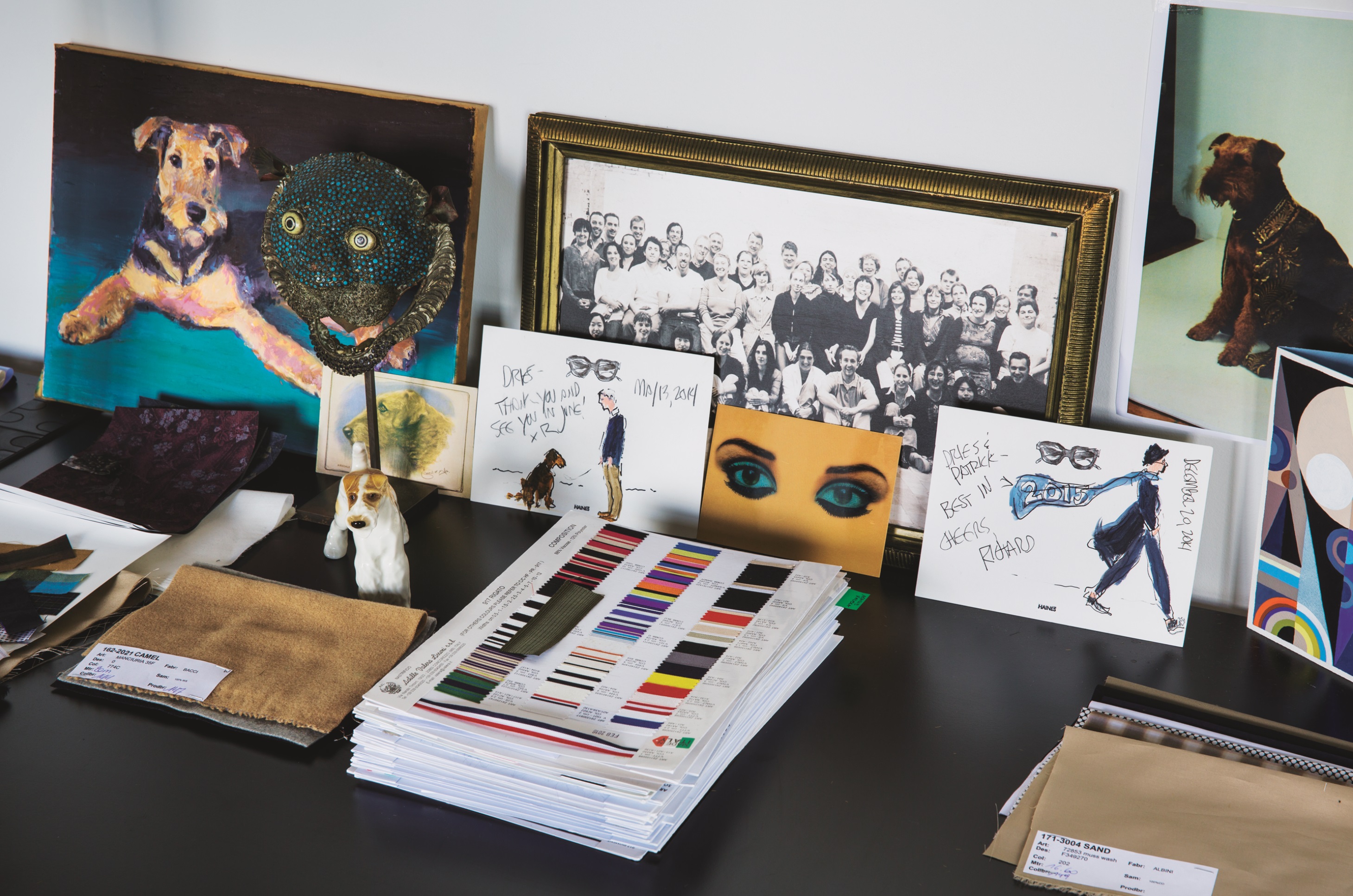
For the summer of 2018, you articulate Pina Bausch, choreographer of visceral humanity, and Slim Aarons, photographer of the carefree jet set. How is the transplant done?
Pina Bausch is almost always present in my work. Whenever she created a new ballet in Wuppertal (in Germany, where the choreographer founded her company, Tanztheater Wuppertal), the second city where she presented it was Antwerp. I did not miss one, in the 80s, it was fantastic. There are many similarities between his work and what people consider to be Belgian fashion. Playing with clichés, with what you think you know, looking at things from a different perspective is typical of Pina Bausch, but also of our work. This season, there is Pina Bausch in fluidity, these women in heels with a nightie, both sexy and very raw. At Slim Aarons, it's the falseness I like. His photos often show the perfect happy family of the 60s, but give a flick and the decor falls. It is falsely perfect, like the beautiful scene of Pina Bausch where all the carnations will end crushed (in the show Nelken, created in 1982). In my eyes they have a lot in common.
Do you judge yourself severely?
Yes, but it's also a way to push me to continue. See what might have been better, that's how I work.
Do you trust your spontaneity?
Yes, I have enough experience to trust my instinct. But I know I have to hesitate too. And when I say "black", it's good that sometimes my companion, Patrick, and my stylist, Nancy, answer me: "White may not be so bad. They both know how far they can go. Whatever happens, I will not choose the "gray" solution. I do not like the in-between. (In Reiner Holzemer's film Dries, he says, "I do not know what it's like to create collections without the help of my mate, it's always been that way.")
For your 100th collection, in March 2017, you have revisited prints of past seasons and scroll through your muses of the last thirty years, Nadja Auermann, Amber Valletta, Alek Wek ... Did your perfectionism let you enjoy the moment?
It was a very beautiful moment. All these women together, camaraderie, the incredible reaction of the public (many were in tears in the room), it was more than a parade. This show made very visible what we have lost in fashion, this sweetness, the fact that models are an integral part of the outfits. On most parades today, faces are neutral to focus on clothing. All girls are alike, the personality is lost. For this hundredth parade, the models were looking for eye contact. The first to go out was Kristina (from Coninck, who was the first women's show, in 1993), she started looking around and started smiling at people. The audience wondered what was happening. The elders said to each other, "It's been a while since we've seen that. And the young people: "It's strange, we knew it had existed, but we had never seen it. "
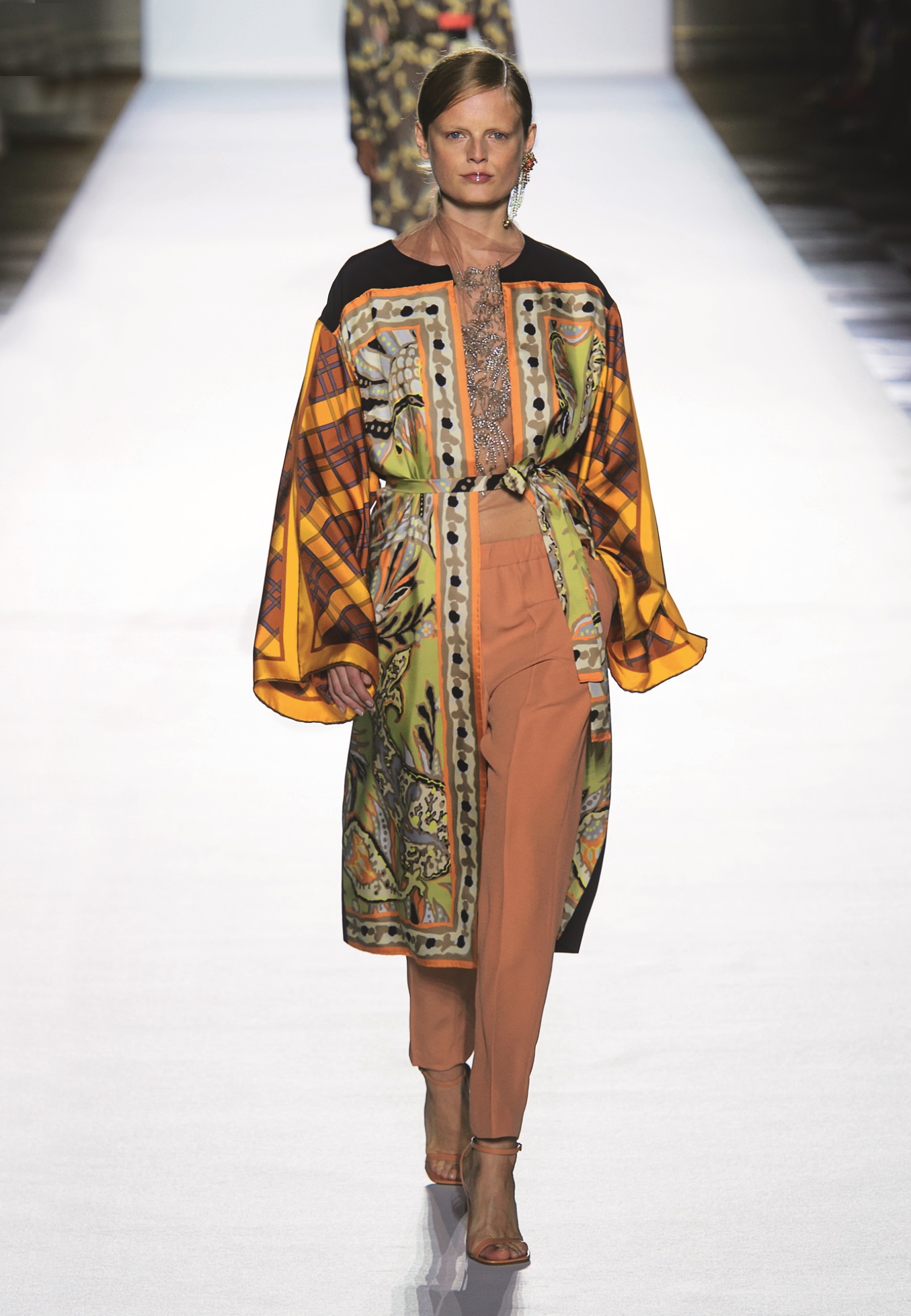
You have the taste of flamboyant women, like Peggy Guggenheim ...
And Iris Apfel, Isabella Blow, Anna Piaggi, all my friends ... These women dare, dress for the pleasure of dressing, not to shock. Iris is 96, and the last time I saw her in New York, she wore turquoise suede shoes, turquoise pants, turquoise blouse, turquoise Mongolian lamb jacket, her jewels were of course huge. and turquoise. She does not say to herself: "I go out, I want to be looked at"; no, that's his vision. That's what's missing today, people dress more for the outside world than for fun themselves.
You make prints, jacquards and embroidery every season, so that the factories that economically depend on you do not end up on the job ...
I can not make an all-white collection, because that would be a problem for the factories. But constraints stimulate creativity more than total freedom. I was educated as well. At the fashion school (the Royal Academy of Fine Arts Antwerp), we had a teacher - Mrs Prijot - with very strict rules. It was the end of the 70s, the beginning of the 80s, every year a revolution occurred: Montana, Mugler, the Italians Versace and Armani , punk, the arrival of the Japanese, Gaultier , irony in fashion ... But for Ms. Prijot, Coco Chanel was the only great seamstress in the world, knees were the ugliest part of a woman's body, they had to be hidden, not to make miniskirts. We had to create what we dreamed of with these rules in mind. It taught me a lot.
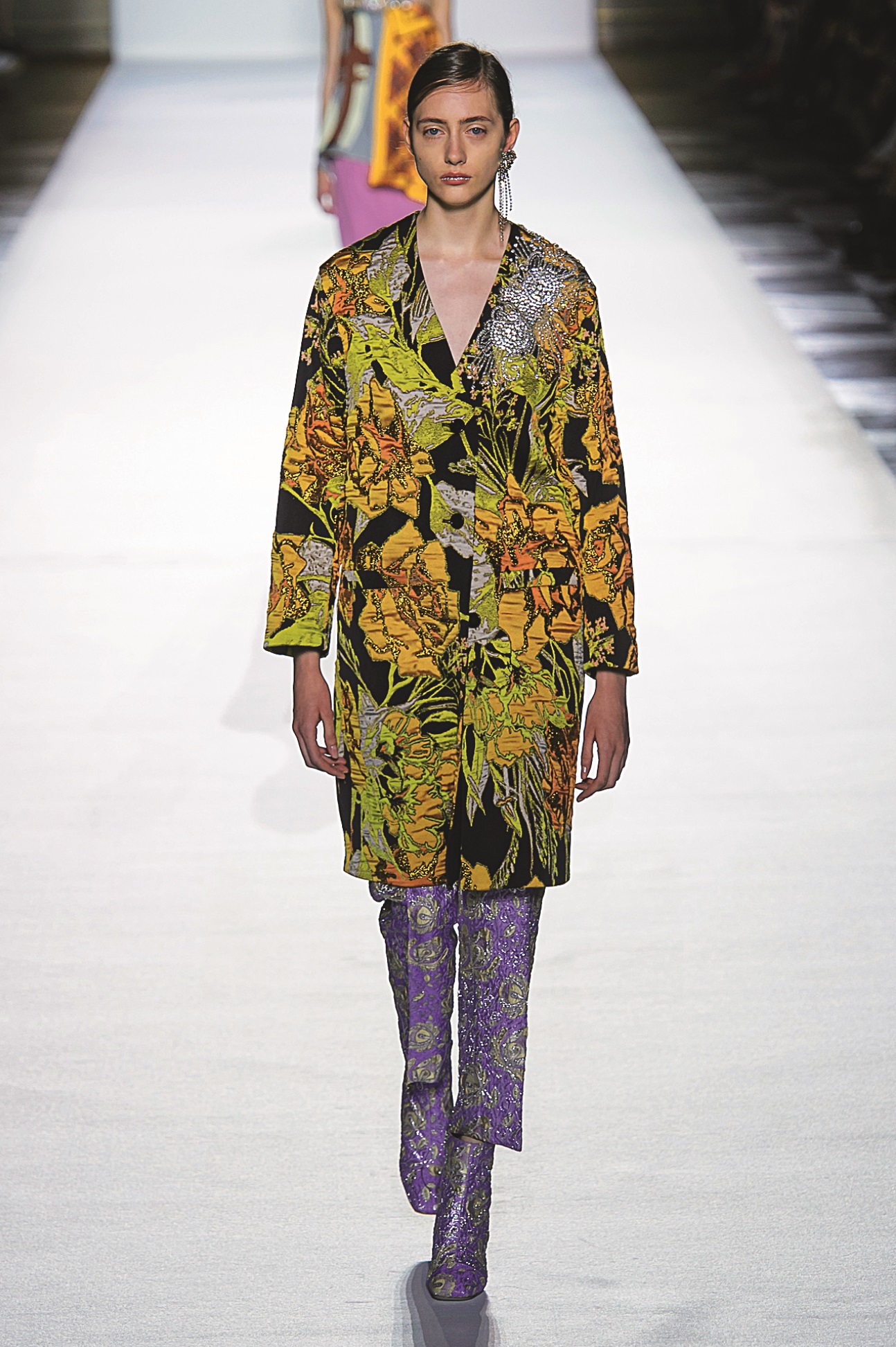
These years have radically changed the person you were?
Yes. As a child, I was in a Jesuit school. But my real education started in fashion school, in contact with other students (with Ann Demeulemeester, Walter Van Beirendonck, Dirk Bikkembergs, Dirk Van Saene and Marina Yee, they are the "Six of Antwerp", that the world discovers in 1986). We educated each other. Everyone had their strengths, their vision - Ann, Walter, Martin (Margiela, then also a student at the academy) ... - we stimulated our respective creativities. The clash between my education and the academy has been so gigantic that I still look at the world with the hope of such a strong discovery. It was a time of great change. I remember at 14, having seen Bowie, Ziggy Stardust period, singing on TV for the first time, it was a revelation.
I clearly remember my mother saying to me, 'I hope you're not gay.' In the 1970s, it was not an easy subject to tackle.
Your fascination with David Bowie has been disruptive for your parents?
Not really. The fashion school was a surprise to them. But that had to do with my homosexuality; for a bourgeois family, it was a bit 'What is this? I clearly remember my mother saying, "I hope you're not gay. I said that I did not know how to answer that question, because I knew very well that I was gay. Fortunately for a lot of people, today it's easier to talk about it, but for us in the 1970s it was not an easy topic to tackle. On one side you hide, but you know that under the apparent neutrality of your bourgeois education something is happening. You know that you will not be the lawyer or the doctor that your Jesuit school predestines you to be.
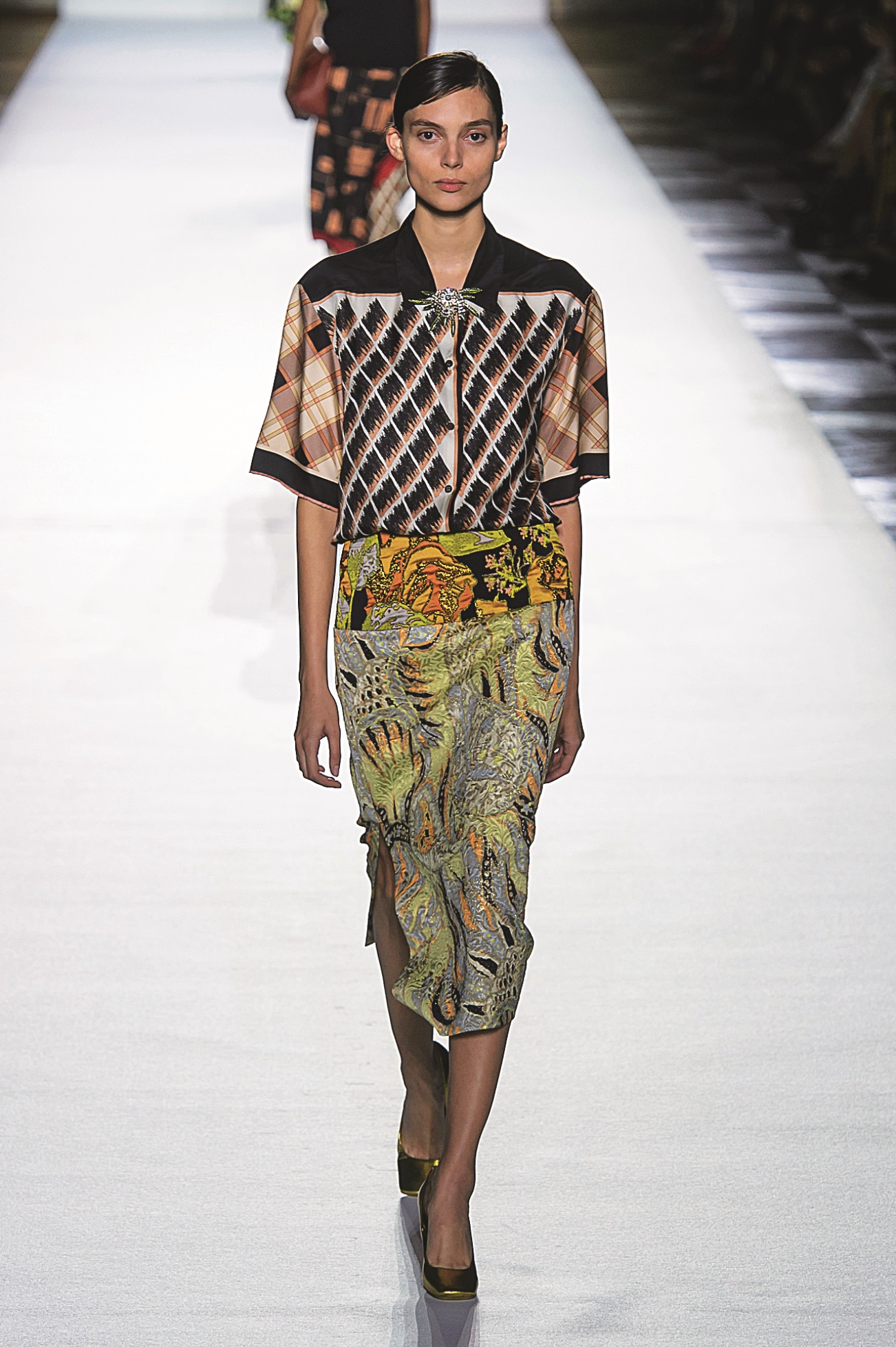
What was the last thing that moved you?
Last week, I made a lot of book signings (at the end of 2017, two volumes * were published which retrace the first hundred shows of the house). I did not realize how much clothing matters to people. I met hundreds of people, students, grandmothers, women and men from all walks of life, those who work six months to afford a room, those who buy five outfits a season. A couple who married in Dries Van Noten in the 90s. A woman in tears who told me that she had buried her mother dressed in one of my outfits. She showed me the picture of her mother on her deathbed, wearing my dress. It was a bit more than I expected, but it was very moving. It's not just clothes, to cover their nakedness, it's a part of their memory. It's very nice to be part of an important moment.
(*) Dries Van Noten, 1-50, and 51-100, eds. Lannoo.
Article originally published in Marie Claire n ° 787 dated March 2018
